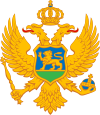
The City and Borough of Juneau, more commonly known simply as Juneau, is the capital city of the U.S. state of Alaska, located in the Gastineau Channel and the Alaskan panhandle. Juneau was named the capital of Alaska in 1906, when the government of what was then the District of Alaska was moved from Sitka as dictated by the U.S. Congress in 1900. On July 1, 1970, the City of Juneau merged with the City of Douglas and the surrounding Greater Juneau Borough to form the current consolidated city-borough, which ranks as the second-largest municipality in the United States by area and is larger than both Rhode Island and Delaware.

Nikšić, is the second largest city in Montenegro, with a total population of 56,970 located in the west of the country, in the centre of the spacious Nikšić field at the foot of Trebjesa Hill. It is the center of Nikšić Municipality with population of 66,725 according to 2023 census, which is the largest municipality by area and second most inhabited after Podgorica. It was also the largest municipality by area in the former Yugoslavia. It is an important industrial, cultural, and educational center.
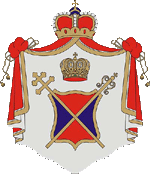
The Montenegrin Orthodox Church is a canonically unrecognized Eastern Orthodox Church. It was formed in 1993 and registered as a non-governmental organization. Antonije Abramović was appointed as its first metropolitan. It claims succession to an older and autocephalous Montenegrin Church, which operated until the unification of the Kingdom of Serbia and Kingdom of Montenegro, later to join the Kingdom of Serbs, Croats and Slovenes in 1918.

Montenegrins are a South Slavic ethnic group that share a common ancestry, culture, history, and language, identified with the country of Montenegro.

Danilovgrad is a town in central Montenegro. It has a population of 6,852, according to the 2011 census. It is situated in the Danilovgrad Municipality which lies along the main route between Montenegro's two largest cities, Podgorica and Nikšić. Via villages, Danilovgrad forms part of a conurbation with Podgorica.

The Great People's Assembly of the Serb People in Montenegro, commonly known as the Podgorica Assembly, was an ad hoc popular assembly convened in November 1918, after the end of World War I in the Kingdom of Montenegro. The assembly was organized by a committee supported by and coordinating with the government of the Kingdom of Serbia. The committee convened the assembly with the aim of facilitating an unconditional union of Montenegro and Serbia and removing king Nikola I of Montenegro from the throne. The unification preceded the establishment of the Kingdom of Serbs, Croats and Slovenes as a unified state of South Slavs by mere days. The unification was justified by the need to establish a single Serbian state for all Serbs, including Montenegro whose population as well as its king felt that it belonged to the Serbian nation and largely supported the unification.
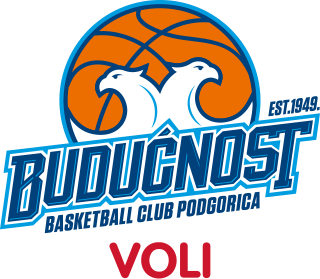
KK Budućnost, currently known as Budućnost VOLI for sponsorship reasons, is a professional basketball club based in Podgorica, Montenegro. The club competes in Montenegrin Basketball League, Adriatic League and Eurocup. It is a part of the Budućnost Sports Society. The club is a founding member and shareholder of the Adriatic Basketball Association.

Fudbalski klub Sutjeska, known as Sutjeska Meridianbet for sponsorship reasons, is an association football club from Nikšić, Montenegro, currently competing in the Montenegrin First League. The club was established in 1920, and has been known by its current name since 1945. Since the restoration of Montenegrin independence in 2006, the club has won five First League titles. It is part of the Sutjeska Sports Society.

The Serbia men's national basketball team represents Serbia in international basketball competition, and is controlled by the Basketball Federation of Serbia. Serbia is currently ranked fourth in the FIBA World Ranking.

The First League of Montenegro is the top professional football league in Montenegro. Founded in 2006, competition is headed by the Football Association of Montenegro. 10 teams participate in this league. The winner of the Montenegrin First League starts the qualifications for the UEFA Champions League from the second round. The second and third placed teams and Montenegrin Cup winner play in the qualifying rounds of the UEFA Conference League. The last placed team is directly relegated to the Montenegrin Second League, and the two next lowest ranked teams play in Montenegrin First League playoffs.
Marko Dapcevich is a former mayor of Sitka, Alaska. He is an "Honored Member" of a United Nations group, signed the US Mayors' Climate Protection Agreement, which is part of the Kyoto Protocol, and spoke out against Touchstone Pictures' non-use of Sitka for The Proposal. Dapcevich has testified before the Alaskan state Senate Finance Committee and has run for the Alaska State Legislature, District 2.
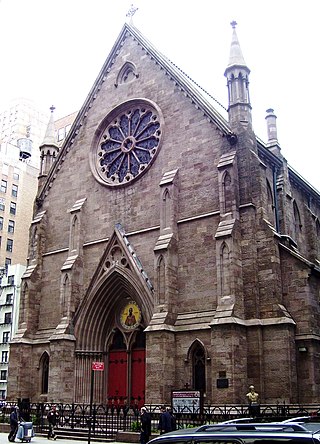
Serbian Americans or American Serbs, are Americans of ethnic Serb ancestry. As of 2013, there were about 190,000 American citizens who identified as having Serb ancestry. However, the number may be significantly higher, as there were some 290,000 additional people who identified as Yugoslavs living in the United States.

Antonije Abramović was an Eastern Orthodox archimandrite, who became the first primate of the canonically unrecognized Montenegrin Orthodox Church, serving from 1993 to 1996. He was styled as His Beatitude the Archbishop of Cetinje and Metropolitan of Montenegro.
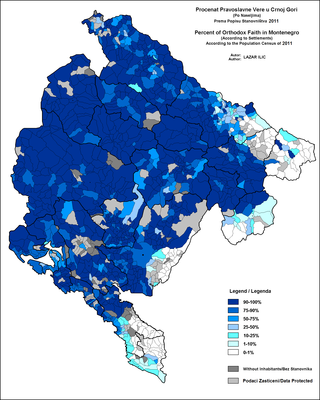
Eastern Orthodoxy in Montenegro refers to adherents, religious communities, institutions and organizations of Eastern Orthodox Christianity in Montenegro. It is the largest Christian denomination in the country. According to the latest census of 2011, 446,858 citizens of Montenegro (72.07%) registered as Eastern Orthodox Christians. The majority of Eastern Orthodox people in Montenegro are adherents of the Serbian Orthodox Church. A minor percentage supports the noncanonical and unrecognized Montenegrin Orthodox Church, which has the status of a religious non-governmental organization (NGO) since its founding in 1993.

The following outline is provided as an overview of and topical guide to the U.S. state of Alaska:
Vuković is a common family name found in Bosnia and Herzegovina, Croatia, Montenegro, and Serbia, of which bearers are either Bosniaks, Croats, Montenegrins or Serbs, as well as medieval families long before idea of national identity ever appeared.

The Rovčani are a historical tribe of Montenegro and one of the seven highlander tribes of the Brda region, alongside the Bjelopavlići, Piperi, Kuči, Bratonožići, Moračani and Vasojevići. The historical region that they inhabit is called Rovca.
Steve Vukovich was a politician and salesman during Alaska's territorial period. Vukovich was born to a Montenegrin family in 1890. He immigrated to America and served in the United States Army from 1917 to 1918. He worked in Chicago before moving to frontier Alaska. He was known for traveling around the territory as a clothing salesman. Vukovich was a member of the 17th Alaska Territorial Legislature from 1945 to 1946. A longtime resident of Juneau, he died suddenly in Fairbanks while traveling for work in late 1951.


















